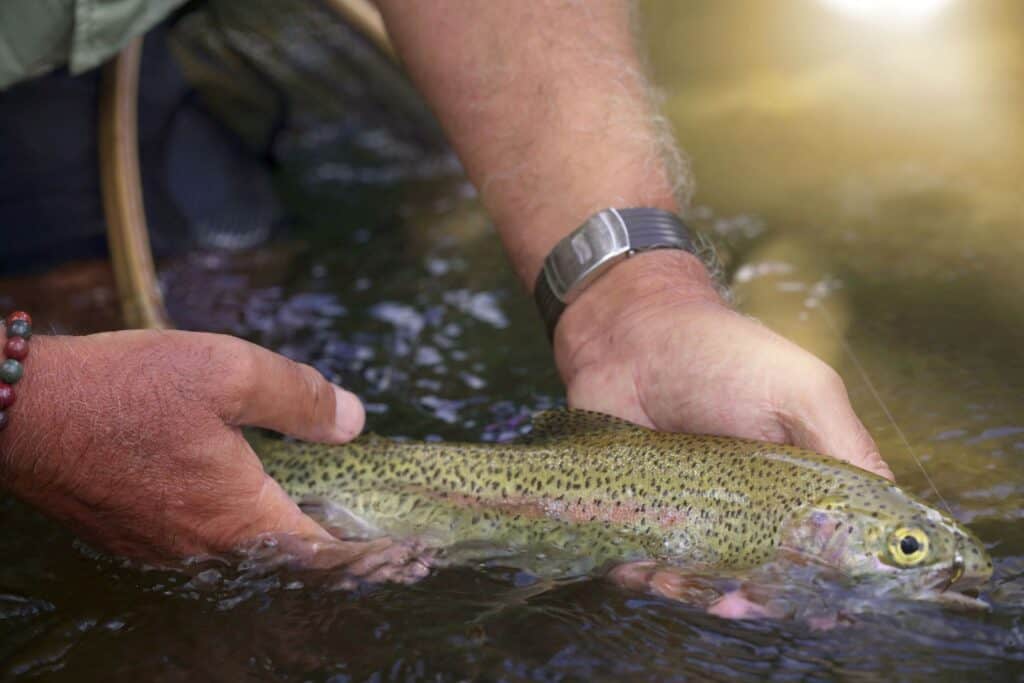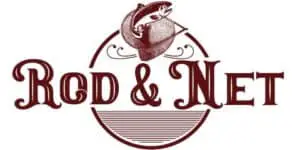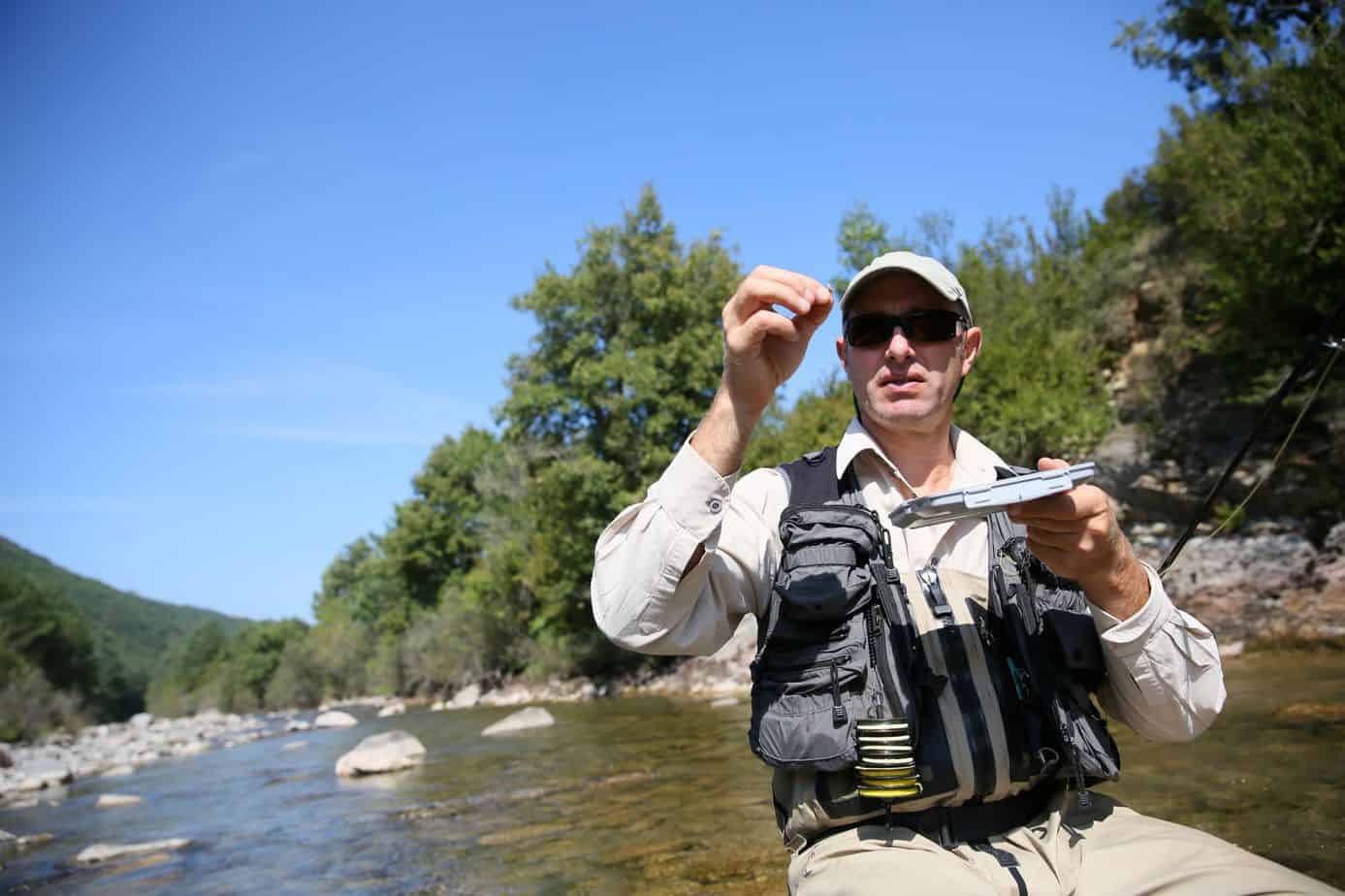Fly fishing eggs are the most versatile pattern in a fly fisher’s box of flies. They can be used as an attractor, imitation, or to imitate the naturals that fish see all around them.
For beginners, it is best to start with simple egg patterns and work your way up – this will allow you to get comfortable with how they behave in the water before moving on.
In this article, we will discuss what best fly fishing egg patterns are and how they work so you can select a few for your next trip!
What is a fly fishing egg pattern?
A fly fishing egg pattern (like this one) is a type of artificial fly used in the sport. They are usually made out of foam or rubber and come in several colors to match different fish species.
The best part about these flies, though, is that they can be used for many purposes – not just as an imitation! Fly fishers commonly use eggs as attractors (to lure fish), imitations (a representation of natural bait), and naturals (something that could occur naturally). This makes them extremely versatile and one you’ll find yourself turning to over time.
Try these great egg patterns.
Feeder Creek Bead Head Trout & Salmon Eggs


Umpqua Micro Spawn Fly Fishing Eggs

How do you tie an egg fly pattern?
There are many ways to tie an egg fly pattern. The best way is dependent on the type of fish you’re targeting and if you want it to imitate a natural or attractor (for example, tying traditional eggs for trout).
Eggs can also be tied as imitations if desired by using an unweighted hook and leaving off any body materials (you may want to use rubber legs on occasion). When tying these flies, it’s best not to put anything too bulky near the eye because fish see this as unnatural.
Can you fly fish with salmon egg patterns?
Yes! Salmon eggs are best for spawning time when the adults are looking to attract a mate. These patterns should be used in warm water and can even be fished during the day if needed (though it’s best not to use bright colors).
What color egg patterns are best for trout?
Trout are best attracted to natural colors. They don’t like bright or too flashy patterns, so egg fly patterns should be kept in subtle shades of brown and orange (though some will also work well with red).
We recommend beginning with eggs that imitate natural food sources like shrimp or insect larvae. If you try fly fishing with salmon eggs during spawning season, it’s important to use warm colors and avoid brightly colored flies so as not to scare them away. Trout tend to be attracted by more muted shades of white and red – especially if using a floating fly line (these lines make fish presentations appear less aggressive).
It’s best not to use bright colors on these flies because they don’t work well during spawning season – but salmon eggs have also been known as effective attractors for browns and rainbows during springtime!

How do you rig a salmon egg for trout?
An egg fly pattern can be best used in a dropper rig. This is when the trout or fish you’re targeting are sitting deep (or near the bottom) and won’t come up to take an attached dry fly, so this will allow you to reach them with your eggs.
You can also best use these patterns in tandem with another fly (like a nymph) to entice the fish up. When this is done, it’s best to tie your egg on first and then place the nymphs below (as opposed to tying them together). This will allow you for better movement of both flies without tangling up – which means more bites!
Will stocked trout eat salmon eggs?
Stocked trout are best targeted with a more natural fly like an egg or mayfly larva. This is because they’ll be used to seeing these types of flies and will eat them readily without issue.
Are eggs the best bait for anything?
Eggs work great as bait no matter what type of water you’re fishing in, but they do best when targeting smaller species like brookies or rainbows. There’s not much to it other than using an egg pattern and putting some weight on your fly line so that you can get the flies down deep into the water column where currents might be dragging them all over anyway!
What is the best size egg to use?
The answer depends entirely on how deep your target area is, what season (more food sources available closer to winter), and what species you’re targeting.
For instance, if you’re fishing for bass in the summer when bugs are abundant and easy prey, then a size 16 egg is best (or slightly larger). Again this depends on where you live and what species of fish inhabit your area.
Conclusion
Egg fly patterns are an effective way to target a wide variety of fish. Trout and salmon eggs are best when used in tandem with other flies- trout, for instance, will readily eat a natural-looking egg pattern but might be scared off by bright colors or flashy designs.
On the other hand, Salmon eggs work well during the spawning season because they imitate insects that adult males want to attract mates with. The size you should use depends on where you live (larger sizes may be needed if fishing for bass) and what type of water you’re trying to catch them in – but all types should start out using a simple white/brown/orange egg imitation tied onto the hook first before adding any additional materials.


